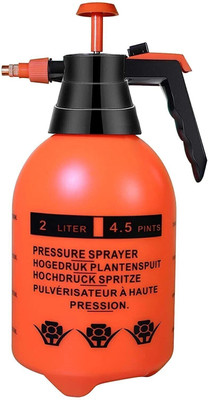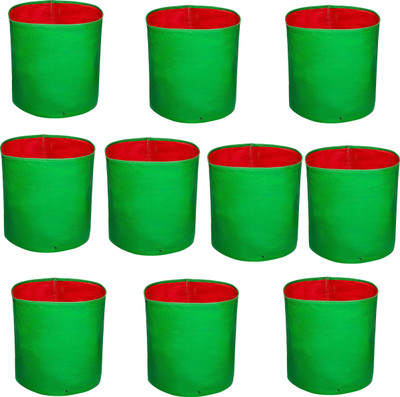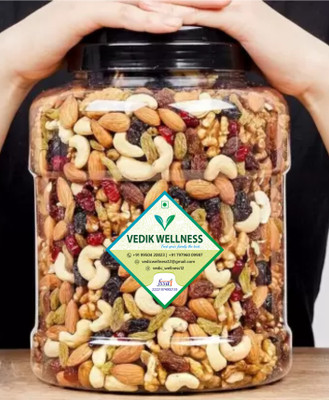
Farm Seeds Cherry Tomato Seed (100 per packet)
Price: Not Available
Currently Unavailable
Highlights
- Seed Type: Vegetable
- Suitable For: Indoor, Outdoor
- Organic Plant Seed
- Seed For: Cherry Tomato
- Quantity: 100 per packet
Description
The most popular garden vegetable crop, tomatoes come in a wide range of sizes, shapes and colors. Choose determinate varieties for early harvest or cool conditions. Compact varieties are also good choices for containers and planting in flower beds.
Tomatoes are an incredibly versatile food. They are often considered as a vegetable, though ideally they are a citrus fruit. They are a rich source of Vitamin C and help in increasing your immunity. Not just this, tomatoes also provide several other vitamins, magnesium, phosphorus and copper, all of which are necessary for good health.
The best part is that they can be eaten either raw, in salads, sandwiches or in vegetables.
Lifecycle: annual
Tender annual
Ease-of-care: moderately difficult, Requires good soil, even moisture. Very labor intensive if you stake, prune or use plastic mulch and row covers.
Height: 2 to 6 feet
Spread: 2 to 6 feet, Staked and pruned plants can be trained to narrow spreads. Plants left to sprawl can spread 6 feet or more. If space is limiting, use smaller determinate varieties.
The word "tomato" may refer to the plant (Solanum lycopersicum) or the edible, typically red, fruit that it bears. Having originated in America, the tomato was spread around the world following the Spanish colonization of the Americas, and its many varieties are now widely grown, often in greenhouses in cooler climates.
Growing Information
Tomato plants are vines, and they have two basic ways of growing, called determinate and indeterminate.
The vines of determinate varieties (sometimes called bush tomatoes) grow only 1 to 3 feet long, and the main stem and side stems produce about three flower clusters each. Once flowers form at the vine tips, the plant stops growing. This means determinate types set fruit over about a two-week period and then stop, which makes them excellent choices for canning.
Indeterminate tomatoes have sprawling vines that grow 6 to 20 feet long. Most produce about three flower clusters at every second leaf. They keep growing and producing unless stopped by frost, disease, or lack of nutrients, which means you can keep picking fresh tomatoes the whole season. Pruning is necessary, however, or they will put too much energy into vine production.
Sunlight: full sun, Tomatoes need at least 8 hours of direct sun daily.
Soil conditions: tolerates acid soil, requires well-drained soil. Prefers well-drained, fertile soil, high in organic matter. Clays and loams produce the highest yields. But lighter soils that drain and warm quickly can produce earlier harvests -- particularly if they are on a slight slope to the south or southeast. Can tolerate slightly acid soils, as low as pH 5.5. But produces best when pH is 6.0 to 6.8. Consistent moisture needed to prevent blossom end rot, but does not tolerate waterlogged soils.
Special locations: outdoor containers - Small, determinate or miniature varieties work best. Requires frequent watering.
Germination temperature: 60 F to 95 F - Germinates best at 75 F to 90 F. Germinates very slowly at cooler temperatures.
Days to emergence: 6 to 12 - About 1 week at 75 F.
Read More
Specifications
In The Box
|
General
| Brand |
|
| Model Name |
|
| Quantity |
|
| Common Name |
|
| Suitable For |
|
| Type of Seed |
|
| Organic |
|
| Soil Nutrient Requirements |
|
| Sowing Method |
|
| Net Quantity |
|
Additional Features
| Care Instructions |
|
Ratings & Reviews
3.8
★
22 Ratings &
1 Reviews
- 5★
- 4★
- 3★
- 2★
- 1★
- 12
- 2
- 3
- 2
- 3
1
Waste of money!
waste of money one small plant is not grown in whole pack please don't purchase any one this product
READ MOREdiwakar pasala
Certified Buyer, Chittoor District
Aug, 2019
1
2
Report Abuse
Be the first to ask about this product
Safe and Secure Payments.Easy returns.100% Authentic products.
Back to top




